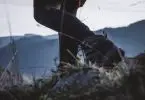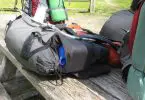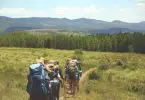Camping is fun. You can venture into the woods to get away from all the hustle and bustle of everyday life. But to do that, you will have to leave all the conveniences of a modern lifestyle behind as well. Usually, to cook, all you have to do is turn on the stove.
But in the wild, you’ll have to prep the burner (if you have one), the fuel, the ingredients using what limited equipment you have, and something that can usually be completed in minutes will take hours. Luckily, certain camping life hacks that have been developed over the years can help make things easier.
Camping life hacks will not only make everything simpler and less time-consuming, but it will reduce the weight of your backpack as well. Certain camping tools can have multiple uses; things you thought can only be used for the singular act of deodorizing, for example, can also be used to ward off pesky mosquitoes and other insects. That’s one less weight off your shoulders. These camping life hacks have been polished over many long years by thousands of camping enthusiasts, so have no doubt that they are tried and true.
In this article, you’ll find a good number of camping life hacks that will turn any trip into one filled with comfort and time well-spent on having a good time with your family and friends instead of time wasted on wrestling with things that just won’t go your way.
We have separated our camping tips into two separate sections. Packing life hacks will come in handy during the prior preparations, especially if you will be backpacking instead of car-camping. On the other hand, the section easy camping life hacks is designed to be applied in situ.
Packing Life Hacks
There’s never enough space in our backpack. We have to carry so many essentials with us, and yet we’re worried about overloading the backpack and making it too heavy to shoulder. What you don’t know is that with some clever packing tips, you’ll be able to fit everything together nicely like the pieces of a puzzle.
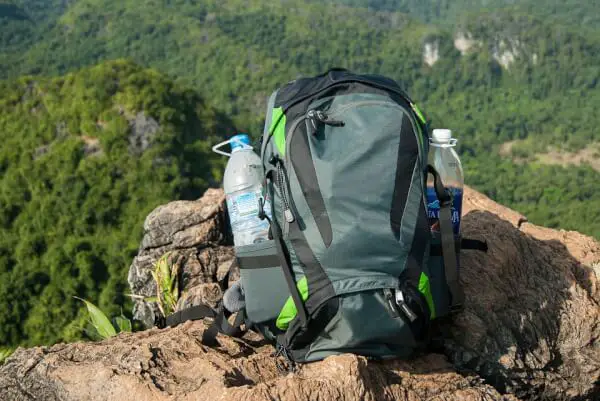
Here are a few useful lifehacks on how to utilize every little available space in your backpack and maximize its potential:
Tip #1: Skip the Insect Repellents
Insect repellents may not sound so troublesome to carry if you’re a solo traveler, but think about what would happen if you’re camping in a group of ten people or so. Since carrying many small tubes of insect repellents wouldn’t be very efficient, usually, the one who drew the short end of the stick would end up having to carry a large and heavy bottle all by themselves.
What you may not know is that buying a huge bottle of commercial insect repellent before a trip isn’t really necessary because there are alternatives that are no less effective, yet much easier to pack.
- Sage
Sage is a very effective and all-natural insect repellent. To unleash its hidden power, all you have to do is throw it into a fire.
The smell it exudes shouldn’t bother you that much, if any, but it is positively lethal to those pesky mosquitoes.
- Baby Oil
Baby oil, especially that of the brand Johnson & Johnson and the one that has a creamy instead of a watery consistency, also makes a great insect repellant. You might wonder why you should go for this option instead of just bringing a commercial insect repellent with you from the first place since the alternative is not much lighter in weight, but if you’re the type that dislikes the smell of conventional insect repellents, the baby oil is much easier on the nose, and it can also be used to soothe scratches or bruises.
- Deodorant
We’ve mentioned this one briefly in the intro. By opting for deodorant instead of a traditional insect repellent, you will have combined two very different yet at the same time very important functions into one. Applying deodorant can also soothe itchiness, so even if you do happen to get bitten, you have a countermeasure ready.
- Liquid Soap
If it’s not mosquitoes you’re having problems with, but ticks, there is a surefire way to get them to stop biting. Chances are, if you’re on a short-term trip, you won’t take a bath in the wild for fear of unintentionally contaminating the environment, but it wouldn’t hurt to still bring some liquid soap with you.
It kills ticks in less than 20 seconds. If you happen to have some tea tree oil at home, it also works as a tick repellent.
Tip #2: Make the Most Out of Your Containers
When we go camping, we typically put delicate stuff such as food, or a box of matches, or any electronics in airtight and waterproof containers. The containers in itself are heavy, and since they serve no other purpose other than as a form of protection, sometimes we wish we could do without them. But you will discover a newfound appreciation for camping containers when you realize how versatile they are and how they can be used for so many other purposes, such as:
- DIY Light Source
Tired of always having to carry the deadweight of huge camping lanterns plus their fuel in your backpack? If you have a transparent jug of water, you can turn it into a very efficient light source just with the help of a small headlamp. Strap the headlamp to the side of the water jug and voila! Your tent is illuminated.
Or, you can scrap the headlamp and opt for a glow-in-the-dark paint. Paint the inside of a transparent jar with the paint to get yourself a very convenient and pretty light source. Just make sure that the paint is non-toxic.
- DIY Duct Tape Holder
We can always find one use or another for duct tape, even in the wild. It’s a staple in any household, but not everyone remembers to bring some when going out on a camping trip. Even if you do remember, carrying a whole roll of duct tape seems superfluous. So, why not just cut a few strips out and stick them to your water bottle? They won’t take up any extra space this way, and they will retain their stickiness.
- Tic-Tac Boxes
If you will be cooking over a campfire, it just won’t be the same without spices like black pepper and salt. Since you only need the spices in small amounts, your first thought might be to put them in little plastic bags. Unfortunately, things get jostled around a lot in your backpack. If there happens to be something sharp in your backpack and it pokes a hole in the plastic bag, everything will get ruined.
If you have some spare Tic-Tac boxes somewhere in your house, this is the perfect time to dig them out again and use them as spice containers. They can also be used to hold your daily dose of medications.
Tip #3: Make the Most Out of Your Cooler
The cooler is a must-have on most camping trips, but it is also one of the heaviest and most cumbersome to carry. Even if you will be car camping, so the weight doesn’t pose much of an issue, it doesn’t change the fact that it takes up a lot of space. Here’s how you can maximize the cooler to its full potential so it can hold more stuff and take up less space.
- Freeze Jugs of Water
What do you usually pack your cooler with? Cans of beer? Soda? Whatever it is, chances are you plan to line your cooler up with lots of ice cubes to keep it cool. While this isn’t a bad way to go, the ice cubes certainly take up space in the cooler that could’ve been used for something more useful—such as jugs of water.
These serve as a viable alternative to the ice cubes; the difference is, you can melt the water later to drink, so you won’t have to carry extra water in separate containers.
- Load it Up with Food Stuff
When we think about a cooler, the thing that jumps to the foremost on our mind is that we have to fill it up with drinks. Fact is, the cooler can be used to hold lots of foodstuff as well. A few examples include eggs and pasta. You can even whip up a spaghetti carbonara out in the wild! But pasta is kind of difficult to cook, since you may not have a clean source of water readily available. Times like this, you might want to switch it up with polenta. It’s no less delicious, and polenta doesn’t have to be boiled in water; it can be pan-fried. Doesn’t polenta carbonara sound unique and delicious?
Easy Camping Life Hacks
We’ve explained how you can maximize the space in your backpack by making the most out of everything and getting several uses out of one thing.
Now that everything is set and you’re ready to depart, we’re going to move on to in situ tips on how you can make your trip a lot more convenient and fun with what limited supplies you have at the campsite.
Tip #1: Campfire Tips
No camping trip is complete without a campfire. It’s a lot of fun while it’s already blazing, but to build one takes a lot of time and effort. Luckily, we’ve got some great life hacks for you right here to help with building a campfire in the most efficient way.
- Use Corn Chips as Kindling
One of the most time-consuming parts of building a campfire is having to scour the woods for kindling. The sticks have to be completely dry and preferably brittle enough to be picked apart by hand for this to work. If you’ve circled the area for hours without encountering any suitable tinder, don’t despair.
Surely, you’ve brought some corn chip snacks with you (who goes anywhere without a pack of Doritos?). These burn really well, so they will serve nicely as fuel. No, perhaps you won’t get to eat them anymore, but that just means you’ll be able to look forward to delicious campfire food better.
- Go For Match-Light Charcoal
By using match-light charcoal, you won’t have to bring any lighter fluid with you. But since carrying a whole bag of match-light charcoal is superfluous and inefficient, you’ll have to find another method to carry just the few pieces you need easily. Times like this, an empty egg carton comes in handy.
- Pack Your Box of Matches Smartly
Bringing a box of matches only for it to get drenched because you didn’t think to put it in a waterproof container is a classic hiking beginner’s error. So, let’s say you’ve learned from your mistake. You take out the matches, discard the box, and put them in a small, airtight container.
That’s all well and good, but what will you use to ignite the matches now? Discarding the box does make the matches safer and easier to carry, but don’t forget that you need the sandpaper glued to the sides of the box to light the matches. So don’t forget to cut the sandpaper out of the box and glue it to the top of your new container.
Tip #2: Cooking Tips
Campfire cooking is fun, cheerful, and totally mouthwatering. But other than the traditional marshmallow and corn cobs, campfire cooking doesn’t come in many varieties. The good thing is, if you’re willing to break tradition a little bit to get creative, you will be able to show off your superior cooking skills to make the group go “wow.”
- Meat
While roasting meat in the fire, it tends to get all dry and charred in places. To keep this from happening, wrap the meat in cabbage before you toast it. The meat will stay moist and perfectly cooked. Plus, the addition of cabbage promotes better nutritional intake.
- Campfire Chocolate Rolls
Never thought you could eat freshly baked bread while camping, did you? It’s actually very easy. All you have to do is take one crescent roll dough out of the package, wrap the dough around a Y-shaped stick, then place a bar of chocolate in the middle.
As you cook it, the chocolate will melt inside the dough. It’s absolutely delish!
- Dessert
Thought the only deliciously sweet dessert you could make easily over a campfire is the marshmallow or the occasional s’mores? Think again! You can make a campfire cone filled with melty goodness simply by bringing a pack of aluminum foil with you. First, shape the aluminum foil into cones.
Cut your favorite fruits such as strawberries, bananas, and kiwis into small pieces and pour them evenly into several aluminum cones. Mix them with some marshmallows and chocolate chips, then grill them for maximum flavor.
- Campfire Popcorn
Do you still have that aluminum foil you used to make dessert? If you do, we hope you brought some popcorn kernels with you because you don’t want to miss out on the chance to enjoy nature as if you were sitting in a movie theater!
Put equal amounts of popcorn and vegetable oil inside the aluminum foil, tie it loosely around a stick while making sure that there’s enough room for the popcorn kernels to grow, then roast it until you hear that signature pop.
- Rosemary-Flavored Barbeque
If you have the right equipment to barbeque in the wild, and yet you didn’t have time to marinade the meat and the vegetables, don’t worry. Put a few stalks of rosemary directly atop the charcoal. It’ll lend that fragrant smell to your ingredients. Sprinkle with some salt and pepper, and you’re done.
- Beer Can Chicken
You’ve probably heard of this one. This is a star camping dish that has rocketed in popularity over the last few years because we all start salivating the moment we hear the words “beer” and “chicken.” Having the two of them combined makes everything twice as good. All you really need to do is place an open can of beer on top of a grill, then place a whole chicken with its rear-side facing down on top of the beer can.
However, some people find this cooking method difficult because the chicken is heavier than the can; if it tips over, the spilling liquid will create a whole lot of mess. This is where a specialized beer chicken holder will come in handy; you might want to invest in one if you’re a true fan of beer can chicken.
- Orange Cake
As long as you have a baking pan and some aluminum foil left, you can bake a cake over a campfire easy. You can use any cake mix, but our suggestion is to go for canned cinnamon rolls because these are the easiest to handle and the least messy. To do this, you’ll also need to prepare a few oranges.
Cut the oranges in half, scoop the insides out and set aside to eat later or to use as garnish, then place the dough in the hollowed-out orange peel. Put them in the baking pan then cover it up with a layer of aluminum foil to bake. This method is not only easy, but it also adds a zesty kick to the cake!
Tip #3: Comfort-Maximizing Tips
When we decide to go camping, we’re all prepared to leave behind our urban comfort and conveniences for some tough loving from Mother Nature. Still, it doesn’t mean that you have to subject yourself to all that ruggedness even when you don’t want to. There are ways to camp in comfort.
- Layer the Tent Floor with Foam Tiles
While pitching a tent, we favor a flat patch of land because sleeping on rocky grounds is hell on our back. But even then, there are always some small pebbles that will dig into our flesh, and these can often be felt even if we bundle up inside of our sleeping bag. One smart countermeasure is to create a barrier of foam tiles.
Admittedly, foam tiles, especially when you bring them along in bulk, are a bit of a hassle to carry. They are not heavy, but they do take up a lot of space. Still, if you’re going to be car camping, we recommend that you go through all that trouble because it will all be worth it in the end.
- Add a Romantic Nuance to the Campsite
While camping with your significant other, don’t you wish you could light your surroundings up with candles so you can enjoy nature while being bathed in the soothing glow of candlelight? Sadly, you have to be very careful about placing candles on the ground in a campsite lest you set the grass on fire.
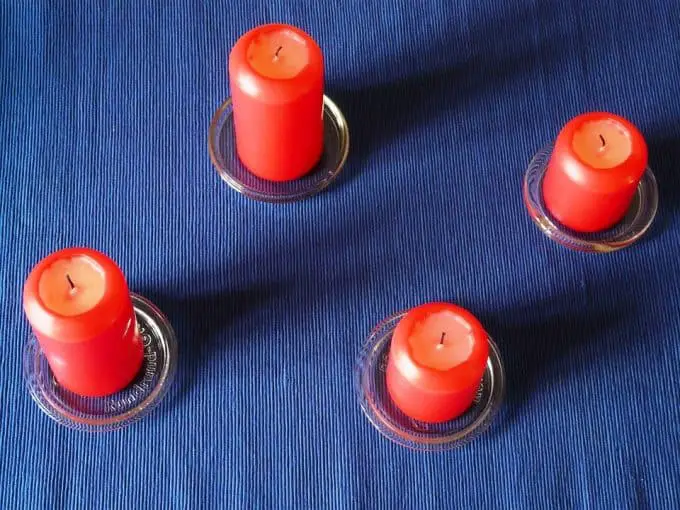
The good news is, there is an easy way to circumvent this hurdle. Pierce the candle’s underside with a long, thin stick and stab it to the ground. In the dark, the suspended candles will even look like floating will-o’-the-wisps or fireflies.
- Microfiber Towels
While camping, there’s always one mess or another that you need to clean up. Beer and coffee spillages or the like can be hell to clean if you don’t handle them quickly, which is why, for your peace of mind, we recommend that you bring some microfiber towels with you. These towels won’t take up much space, and they are multifunctional. They dry out really quickly after use and are very easy to clean.
- Snow Sled
Snow sleds can come in really handy even off-season. While you’re car camping, hauling heavy stuff over long distances isn’t much of an issue because the car does all the work for you, but what about when you’ve gone as far as you can go and you need to walk the rest of the way from the parking lot to the campsite? Suddenly it doesn’t seem like such a good idea anymore to fill up your cooler, your backpack, and your bag of cooking equipment to full capacity.
But why defy gravity by carrying them one by one when you can simply pull them along after placing them on a snow sled? Contrary to popular belief, snow sleds don’t just work on snow. It’s great for sandy, grassy, and gravelly areas as well.
Wrap up
Camping is fun, but you can make it better still with the help of a few simple life hacks. Master these techniques and show them off the next time you go camping with your family so you can wow everyone with how versatile and creative you can be. Who knows? Perhaps you’ll be able to turn even those few odd ones who didn’t enjoy camping into a major fan by showing them that it doesn’t have to be a hassle.
Featured Image Source: https://unsplash.com/photos/EcnVW_oD5kU



